Austin, Texas, calls itself the “Live Music Capital of the World” for good reasons — thousands of them. Literally thousands of live musical performances take place in this central Texas city each year and attending a live event is one of the best things to do in Austin. From South by Southwest in the spring, to Austin City Limits Music Festival in the fall, with Willie Nelson’s 4th of July Picnic in between, there’s a large-scale festival nearly every month. There is no “off-season” when it comes to music in Austin.
Music Festivals
Other than being the capital of Texas, Austin is best known for its music scene. 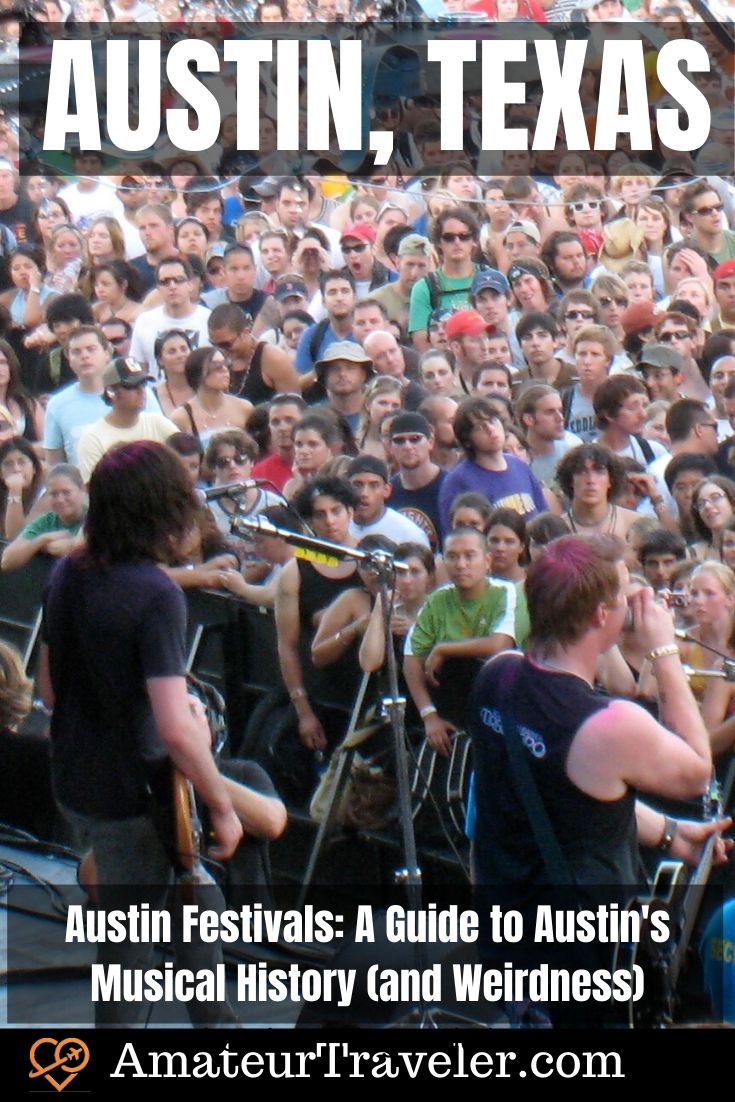
Austin City Limits Music Festival is the perfect way to kick off the fall music season in October. It’s the second biggest, after SXSW. It’s a spin-off of the Austin City Limits television show, which started in 1975 with a pilot featuring Willie Nelson! The show is now the longest-running music series in TV history. The same-named festival began in 2002 and now brings nearly a half-million people to the city each year.
Next up on Austin’s music festival agenda? Levitation (November). This festival, founded in 2008, honors Austin’s own psychedelic rock pioneers, the 13th Floor Elevators. It’s also an excellent chance for the city to show off some home-grown talent, showcasing 25 bands each year. What started as a small independent festival is now internationally acclaimed, attracting fans from around the world.
In December you’ll find the Austin Music Video Festival. This celebration pays homage to the city’s long history with music videos. This celebration features hundreds of international music videos, world premieres, and an awards show. Newcomers show off their videos alongside world-famous artists such as The Flaming Lips, Kesha, and Texas’ own Beyonce.
Music History
Austin was founded in 1839 with a strong Mexican, German, and Swedish presence. Those early settlers brought their music with them. It included polkas, waltzes, lullabies, and opera. They played guitar, piano, accordions, and harmonicas, creating a wide variety of music in the city. About 25 years later, German music halls and beer gardens lined Pecan Street (now Sixth Street). Legend has it General George Custer and his troops frequented these establishments when they were stationed in the Austin area.
In the 1920s, Austin played a role in the popularity of the blues and jazz. “Lead Belly” Ledbetter and Blind Lemon Jefferson were among the biggest names in Texas blues, creating original mixes of that music with jazz. At the time, Austin was home to several blues venues and dozens of jazz musicians who started in Austin achieved national fame.
The 1930s and ’40s saw big band music take center stage across the country and people on the dance floor. Texan Bob Wills is credited with taking this music in a slightly different direction and inventing Western swing — an infectious, danceable countrified jazz.
Of course, Texas is known for country music, and it was well established in Austin venues by the 1950s, but a different type of country was taking shape. As urban areas grew, honkey-tonk music took on issues that weren’t previously addressed in song. Texans Ernest Tubb, Lefty Frizzell, and Ray Price sang about drinking, infidelity, and divorce.
The Texan who played the biggest role in Austin’s country music scene is Willie Nelson. Nelson spent 12 years in Nashville before moving to Austin in 1972. While he had smash hits as a Nashville songwriter, including Patsy Cline’s “Crazy,” he didn’t much care for the city’s dominant style of slick “countrypolitan” country. He and several other country singers who felt they didn’t fit in Music City, settled in Austin. Some of them include Jerry Jeff Walker, Michael Martin Murphey, and Ray Benson. In the capital city of Texas, Willie popularized outlaw country and recorded several successful albums. And in the bars of Austin, hippies, and rednecks enjoyed Nelson’s music in harmony.
One of the all-time biggest influences on rock ‘n’ roll was Texan Buddy Holly. The Beatles, the Hollies, and the Rolling Stones all credit Holly with shaping their music. While Holly came from Lubbock, Texas, his music made it possible for many rockers who took the stage in Austin.
Janis Joplin honed her skills playing a stage at a gas station that had been converted to a bar. Threadgills is now an Austin institution. Joplin was the main draw there in the mid-1960s.
Making appearances at such legendary Austin venues as Armadillo World Headquarters and The Vulcan in the ’70s were Bruce Springsteen, Steve Miller Band, Edgar Winter, and Velvet Underground. And in the late ‘70s, the punk/new wave era saw such acts as the Police, Blondie, Talking Heads, and Austin’s own band the Skunks taking stages around the city.
Austin’s rock scene blossomed in the ‘80s. Dallas-born Stevie Ray Vaughn (thought of as one of the greatest guitar players ever) moved to Austin and was a huge hit. Many guitar players cite Vaughn as one of the main reasons they moved to Austin. There’s a statue of Vaughn on the shores of Austin’s Lady Bird Lake. Vaughn was killed in a helicopter crash in 1990.
There are now hundreds of live music venues in Austin, ranging from small cafes and coffee shops to large arenas and stadiums. You’ll hear country, rock, metal, jazz, Tejano, hip-hop, reggae, and much more.
Outdoor Lifestyle
Austinites spend a lot of time outdoors, thanks to the temperate climate. Many of the city’s music venues are also outside. Amphitheaters, patios, and rooftops boast live music to enjoy under the sun or stars. After a long day of golf, hiking the Barton Creek Greenbelt, swimming at Barton Springs, or biking around a lake, many Austinites relax with a drink or dinner while enjoying live music.
Like caves? There are several in the area to explore. While you’re hiking the Barton Creek Greenbelt, you can also check out the caves that are tucked away there. Georgetown’s Inner Space Cavern has undeveloped sections that have been hidden away for 10,000 years!
Just an hour away from Austin, you can find yourself in a tropical forest. Palmetto State Park is the only park with tropical vegetation in the state of Texas. You can hike the flat trails through the forest or canoe through the murky swamps. It’s an experience like no other in Texas.
Picnicking at the top of Mount Bonnell is a favorite of Austinites. With a steep climb up cement stairs, it’s a fairly easy hike to where you can sit on the mount overlooking Lake Austin and watch the sun go down.
In Austin, you’ll also find outdoor yoga, outdoor bars, cafes, and coffee shops. So many things to do outside, you may only go home to grab a meal and a bit of shut-eye!
Austin hosts events other than music festivals, but you can bet if there’s a crowd, musicians will be there. The Pecan Street Fest is a free, two-day arts festival held outdoors, twice a year. Local and national artists showcase and sell handmade creations from metal, wood, stone, glass, and more.
Theater lovers head to the outdoor Zilker Hillside Theater. You can enjoy the fresh air while watching dance, Shakespeare, or classical music. There’s also a free summer musical each July and August.
The Long Center has both indoor and outdoor performance spaces. There are pet socials, movie nights on the lawn, concerts in the park by the Austin Symphony, and Santa on the Terrace each December.
Why Austin’s ‘Weird’
For 20 years, the city’s slogan has been “Keep Austin Weird.” A man named Red Wassenich used it while making a pledge to a local radio station. It was intended to promote Austin’s businesses and individuality amidst the entry of technology companies into the city. The motto spread quickly and is now entrenched in Austin culture.
Folks pride themselves on their weirdness, but just what is it they enjoy doing? Well, for one thing, they’re a bit batty! From March through October, more than a million bats emerge from under the Congress Avenue Bridge, every evening just before sundown. People congregate to watch the Mexican free-tail bats come flying out. The best time for viewing is from late July to early August when the full population of mama and baby bats soars just before sundown.
Watch out social media! Austin is home to several quintessential public art pieces that make the perfect background for a selfie. There’s the “I love you so much” painted on the side of Jo’s Coffee. “Greetings From Austin” is a mural on Roadhouse Relics, inspired by a postcard. And there’s “Jeremiah the Innocent,” a picture of a frog off Guadalupe Street, who asks, “Hi, how are you?” It was drawn by the late Austin artist and songwriter Daniel Johnston in 1993.
If you need any further proof of Austin’s weirdness, check out the Museum of the Weird on 6th Street. For $12, you can check out props from old B horror movies, walkthrough pirate skeletons, shrunken heads, several wax figures, and a replica of King Kong. You’ll also find medical oddities preserved in glass boxes or floating in formaldehyde.
The Cathedral of Junk on Lareina Drive is worth a visit. It’s exactly what it sounds like. Scraps of metal and everything else are piled and shaped into a cathedral. What makes it even weirder, it’s in the backyard of a home in the middle of a neighborhood. Built by Vince Hannemann, the cathedral is made up of 60 tons of material. Hanneman says he built it for fun, that there’s no special meaning. If you want to visit the cathedral, make an appointment ahead of time. Drop-ins usually aren’t accommodated.
Hunt for fairies on the Woodland Faerie Trail at the Zilker Botanical Garden. The walking paths feature tiny fairy and gnome villages. Each one is different. The little homes and gardens were created by Austin area gardeners, architects, families, and school groups using natural materials like twigs, shells, bark, and rocks. It’s open in the summer and is a great place for kids to put their imaginations to work.
Hippie Hollow Park falls under both outdoor lifestyle and being weird. It’s the only clothing-optional public park in the state of Texas. It’s a landmark Austin hangout since the 1960s. Nude swimming and sunbathing at Lake Travis is legal. While there have been challenges and complaints over the years, Hippie Hollow remains clothing-optional. Sorry teens, you have to be 18 or older to visit.
Perhaps one of the weirdest things about the people who live in Austin is their love, no, adoration of garage sales. There’s been a city-wide garage sale in Austin for 42 years! Individuals and non-profits moved their garage and rummage sales into one location. Antique and collectible dealers joined in on the action. Over the years, the event’s special identity as the place for the unusual and weird led to the decision to keep it just that. No imports, crafts, novelties, or assorted new items are allowed. And as this uniquely Austin event has changed to feature vintage and used goods, the name is also changing to City-Wide Vintage Sale.
So Austin’s musical past, starting in the 1800s, has evolved into festivals drawing millions of musicians, artists, and spectators from around the world. But you don’t have to be a music, garage sale, or bat lover to love Austin. The city shines in so many other areas as well.
Austin’s outdoor culture supports the music scene by creating even more outdoor venues for artists to perform. Porches, patios, rooftops, and courtyards become stages.
Residents value the music scene. They revel in outdoor living. But perhaps most of all, Austinites want to continue living the “weird” life. All the locals ask? When you visit Austin, bring your weirdness with you. We’ll leave the light and the microphone on for you.
Come for a festival, stay for the city, and then used it as a base to explore the area with day trips from Austin.
Hear more about Austin in Travel to Austin, Texas – Amateur Traveler Episode 471


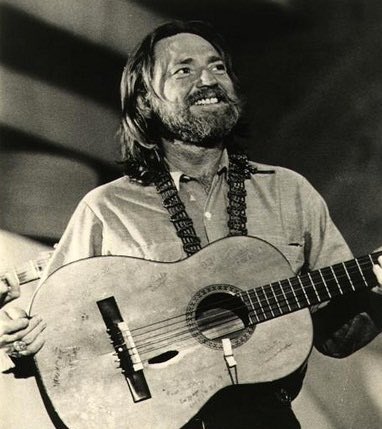

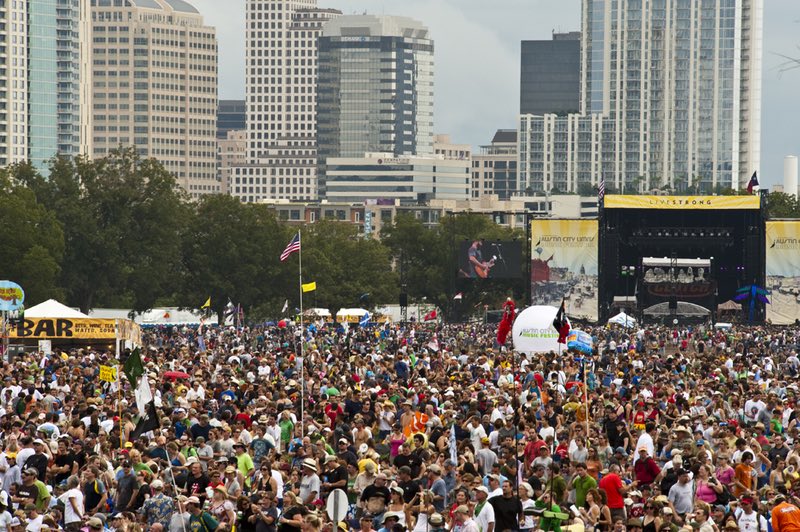
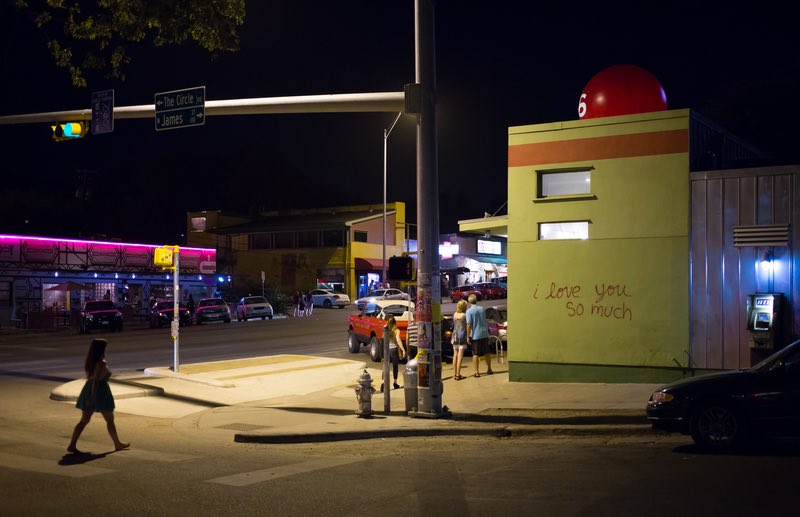
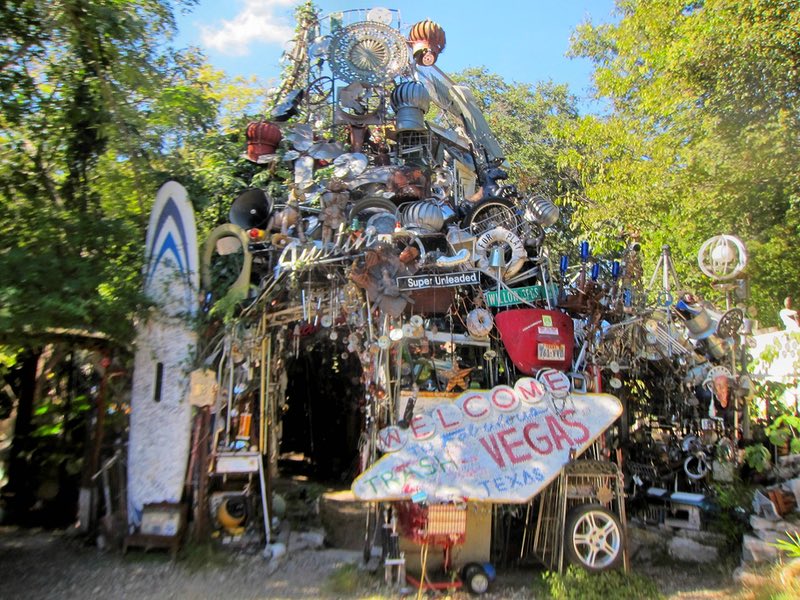
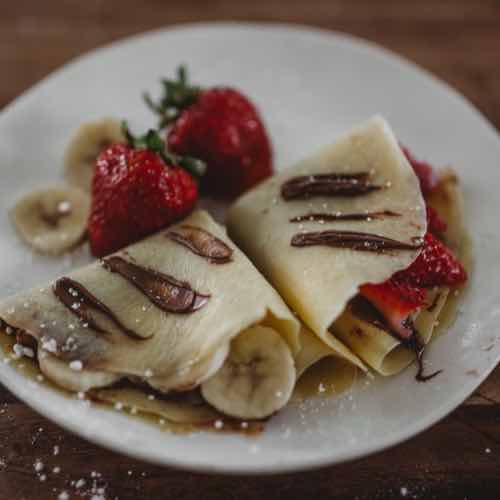 14 Best Brunch Spots in Austin, Texas
14 Best Brunch Spots in Austin, Texas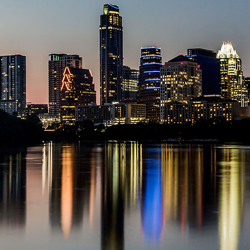 Travel to Austin, Texas – Episode 471
Travel to Austin, Texas – Episode 471 Road Trip to North Dakota – Theodore Roosevelt NP, Medora Musical and Enchanted Highway
Road Trip to North Dakota – Theodore Roosevelt NP, Medora Musical and Enchanted Highway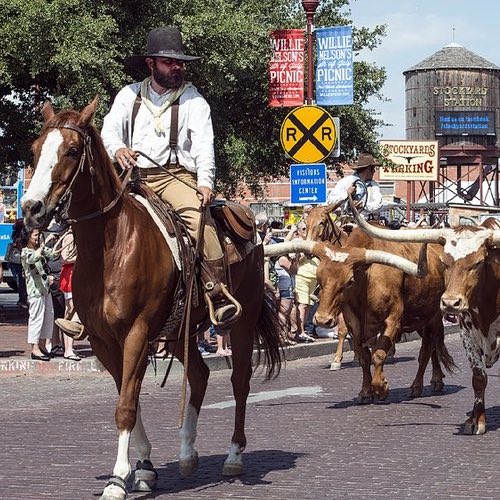 Texas Road Trip – 7 Best Places to Go in Texas and Why
Texas Road Trip – 7 Best Places to Go in Texas and Why
